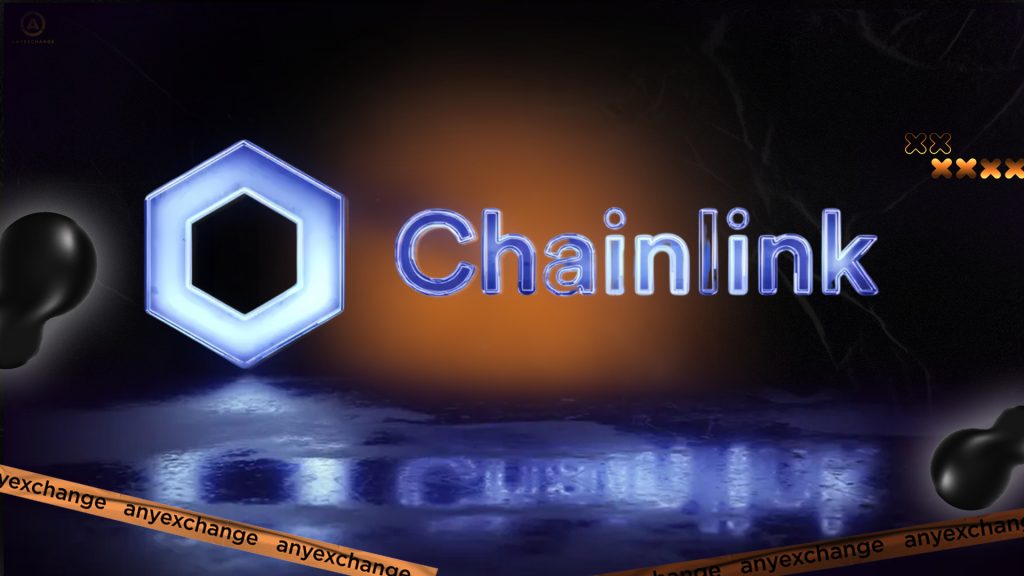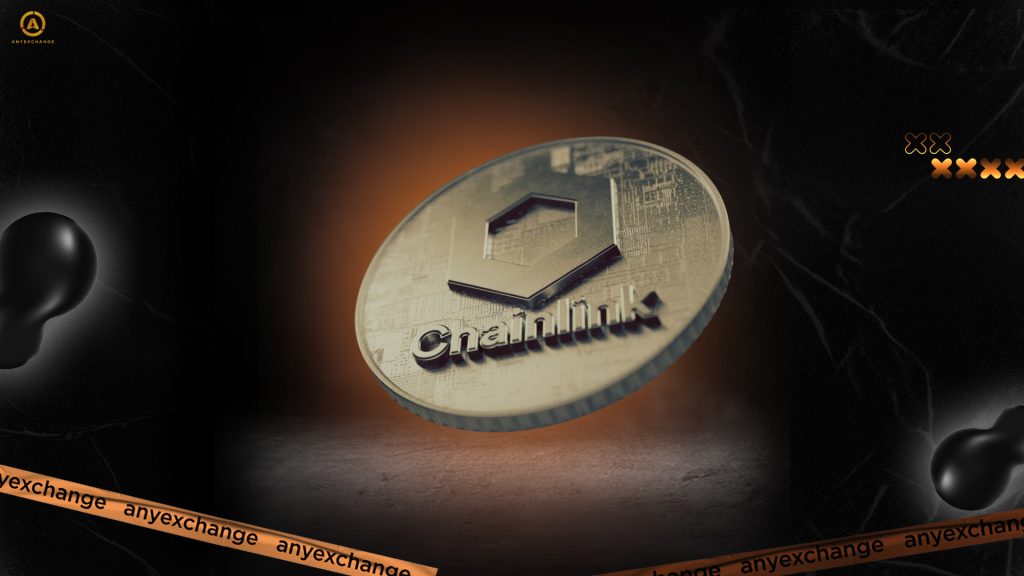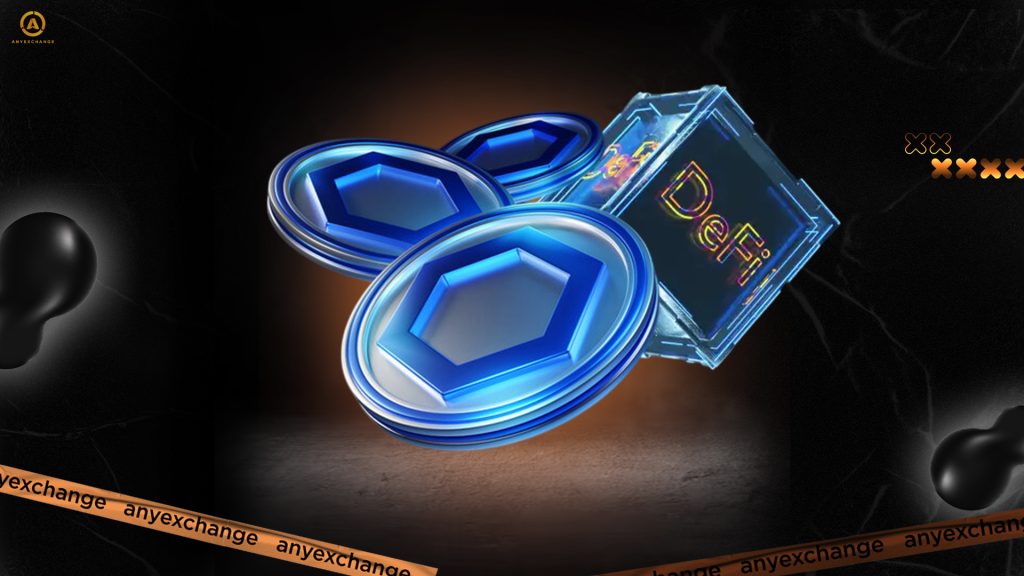
Chainlink is the largest decentralized oracle network in existence today. Its main purpose is to establish connections between blockchains and the real world. With its help, smart contracts can access reliable external data, including market prices and weather conditions.
Chainlink owes its success to SmartContract Ltd. and its co-founder, Sergey Nazarov, the face of the project. Under his leadership, the network evolved into a systеm-forming protocol and established itself as an integral part of the Web3 infrastructure. Thanks to Chainlink, oracles enable smart contracts to correctly interact with the outside world, ensuring clear cross-chain interaction, high data accuracy, security, and transparency.
This article aims to explain how the Chainlink ecosystem functions, why the LINK cryptocurrency is growing in popularity, and which blockchain innovations the project intends to implement by 2025.
What is Chainlink?

It is a decentralized oracle network developed by SmartContract Ltd. in 2017. The project was created to solve a key problem of blockchain technology: the inability to directly obtain accurate external data. Chainlink securely and verifiably transmits digitized external data to smart contracts, enabling their use in real business scenarios. It is not just a set of oracles but also a fundamental protocol that integrates blockchain with the outside world.
Sergey Nazarov is an entrepreneur and visionary who has over 15 years of experience in the crypto industry. Before founding Chainlink, he worked on projects in the field of decentralized applications, including the Secure Asset Exchange crypto exchange and the CryptoMail platform. Nazarov’s background in philosophy and management from New York University enabled him to combine technical thinking and strategic vision to create the unprecedented Chainlink project with like-minded individuals.
The network is based on the LINK cryptocurrency, an ERC-677 token used to pay for the work of oracle nodes, staking, and participation in network management. In 2024, the LINK token entered the top 25 in terms of market capitalization. At the time of writing, according to CoinMarketCap, the network ranks 13th among all cryptocurrencies, with a market cap of approximately $9.2 billion.
Chainlink covers a wide range of industries, including decentralized finance, NFTs, and GameFi, as well as healthcare, insurance, real estate, supply chains, manufacturing, and government initiatives.
Technical Features of Chainlink

Chainlink is built as a network of decentralized oracles, each of which independently extracts, verifies, and transmits external data to smart contracts running on blockchains. Each node in the network functions as an independent provider of data from various sources. Numerous nodes collect information and publish the aggregated value on the blockchain. Unlike centralized oracles, this feature reduces the risk of manipulation or isolated failures. Chainlink uses a reputation and economic incentive model through LINK staking to maintain the integrity of node operators.
One of the network’s key tools is the Chainlink Data Feed, which provides smart contracts with up-to-date market data. These data feeds are actively used in Chainlink DeFi, where data accuracy is critical. For example, the Aave and Compound protocols use data feeds to calculate collateral and liquidation. The network publishes thousands of price updates and other data daily with minimal latency and high fault tolerance.
Chainlink’s Cross-Chain Interoperability Protocol (CCIP) is a universal standard for cross-chain interaction that is actively being developed. CCIP enables the transfer of data and tokens between various blockchains, including Ethereum, BNB Chain, Avalanche, and more. CCIP serves as the central link for exchanging information between isolated ecosystems, accelerating the development of multi-chain applications.
Another one of the network’s unique technical solutions is Chainlink VRF (Verifiable Random Function), a provably fair and verifiable random number generator that enables smart contracts to access random values without risking tampering or other issues. This technology provides cryptographically provable randomness, which is in high demand for gaming, DeFi, and NFT applications. The Sandbox, Axie Infinity, and Decentraland, for example, use VRF to generate loot boxes, unique token characteristics, and game events.
Chainlink automation is another important aspect of the network’s operation. It enables smart contracts to execute without human intervention when specific conditions are met. This is particularly useful for DeFi yield payments and liquidations and NFT issues and updates. The solution is optimized for performance and security, reducing gas costs and increasing execution reliability.
The Role of Oracles in Smart Contracts
Smart contracts are automated programs on the blockchain that are inherently “blind.” They cannot receive external data directly and are unable to execute conditions that depend on real-world variables. This limits their functionality and applicability in real-world scenarios. This is where Chainlink oracles come into play, bridging the gap between on-chain and off-chain data.
Now, let’s examine some real-world examples of oracle use cases:
- Decentralized finance (DeFi): The Uniswap, Aave, and Compound protocols use Chainlink Data Feeds to calculate liquidity and asset values and to protect against manipulation.
- Gaming and NFTs: In projects such as Axie Infinity and Loot, for example, oracles use VRF to generate random results, such as item drops and unique NFT generation.
- Insurance: The Arbol platform uses external weather data to automatically pay insurance claims in the agricultural sector in the event of floods, droughts, or other insured events.
Chainlink ecosystem: DeFi, NFTs, and integrations

Chainlink plays a critical role in DeFi by powering leading protocols such as Aave, Synthetix, MakerDAO, and Compound. Thanks to Chainlink Data Feeds, these platforms receive reliable data on asset prices, exchange rates, and volatility. By the end of 2024, the total value locked (TVL) of protocols using Chainlink surpassed $100 billion. According to preliminary data from the second quarter of 2025, this figure fluctuates between $120 and $130 billion, reflecting steady growth.
Chainlink VRF enables the creation of dynamic NFTs whose parameters are determined by verifiable randomness. This tool is used in The Sandbox and Decentraland, for example, to generate unique items and events. Gamers and collectors can rest assured that the outcome of certain objects is not influenced by developers or subject to manipulation.
Chainlink’s Cross-Chain Interoperability Protocol (CCIP) is becoming the core of cross-chain integration, connecting blockchains such as Ethereum, Solana, Avalanche, Polygon, and more. This enables the transfer of both data and tokens between networks without relying on centralized bridges. In addition to crypto projects, Chainlink’s partnerships inсlude large institutional and technology companies. These partners inсlude Google Cloud, Oracle, SWIFT, Deutsche Telekom, and AWS. The network is integrated with over 50 blockchains and hundreds of projects worldwide. These alliances contribute to the institutionalization of blockchain innovation and the development of real-world use cases. These inсlude:
- asset tokenization (stocks, real estate);
- decentralized insurance platforms,
- prediction markets;
- infrastructure for central bank digital currencies (CBDCs) and government solutions.
Advantages of Chainlink for Web3
- Data reliability. Decentralized oracles provide reliable and secure information, which is their key value. A distributed network of nodes uses reputation mechanisms and economic incentives to deliver data without centralized points of failure.
- Versatility and compatibility: Its compatibility-oriented architecture enables successful integration with various blockchains, including Ethereum, BNB Chain, Arbitrum, Avalanche, Polygon, Base, and Optimism. This makes Chainlink a universal solution for L1/L2 blockchains and hybrid architectures alike.
- Environmental friendliness: Automation and data transfer processes do not require significant computing power. This makes the solution energy efficient, which is especially important given the growing demand for environmental sustainability.
- Decentralized governance. Since its launch in 2022, the LINK staking mechanism has allowed token holders to contribute to network security, verify the reliability of oracles, and vote on protocol governance. This paves the way for complete decentralization.
- Ease of integration: Web3 developers value Chainlink for its flexible connection tools. Data feeds, VRF, CCIP, and automation services are available through easy-to-understand APIs, significantly lowering the technical barrier and speeding up the launch of new projects.
- Blockchain security: Node control mechanisms, penalties for incorrect data, cryptographic verification, and contract auditing ensure a high degree of protection for the entire infrastructure.
Challenges and Risks for Chainlink
- Competition in the oracle market: Despite Chainlink’s leading position in the segment, competitors such as Band Protocol, API3, SupraOracles, and Nest Protocol are developing and offering alternative solutions. Some focus on cheaper data provision models or integration with specific blockchains, putting pressure on Chainlink.
- Dependence on nodes: A decentralized oracle network does not eliminate risks. Attacks, errors, or node failures can affect the quality of information and the operation of smart contracts.
- Regulatory risks: Active participation in decentralized finance, cross-chain interaction, and data management could draw more scrutiny from regulators.
The Future of Chainlink in 2025
By 2025, the Chainlink ecosystem will have continued to develop steadily, strengthening its position as a technology leader in decentralized oracles and as a critical layer of infrastructure for Web3 applications.
One of the main vectors of development remains scaling CCIP. It is expected to be integrated with new L1/L2 solutions and corporate networks by the end of the year. Asset tokenization projects involving integration with banks and government contracts will open up new opportunities for Chainlink. Partnerships with payment systems and financial institutions will open the door to the traditional financial sector, establishing Chainlink as the standard solution for price and index transmission.
According to analysts’ forecasts, Chainlink’s capitalization could reach $15 billion by the end of 2025, securing the LINK token a place in the top 10 on CoinMarketCap. This growth is facilitated by institutional investments, including stock and venture capital.
Conclusion
Chainlink is more than just a protocol; it is critical infrastructure for Web3, providing smart contracts with a reliable connection to the real world. Innovative technologies such as Data Feeds, CCIP, and advanced automation modules demonstrate how deeply oracle logic can be embedded in a wide variety of areas. These achievements have been made possible by the active development of the ecosystem, the LINK cryptocurrency, and the associated infrastructure. Following Chainlink’s development means witnessing the creation of a reliable and secure internet of the future.
Thank you for your attention. Invest safely and profitably!
AnyExchange is an exchanger that allows you to convert cryptocurrency at the most favorable rates and make secure money transfers around the world.
FAQ
What is Chainlink?
Chainlink is a decentralized network of oracles that connects blockchains with the external data necessary for smart contracts to operate.
How do Chainlink oracles work?
They aggregate, verify, and transmit external data to the blockchain. This ensures reliability and protection against manipulation through a decentralized network of nodes.
Why is Chainlink important for DeFi?
Providing accurate and timely data, such as token rates and asset prices, is critical for DeFi to function properly.
Which projects use Chainlink?
The network is integrated with over 1,000 projects, including major DeFi protocols, NFT platforms, insurance projects, and corporate blockchains.
What are the prospects for LINK in 2025?
Its market capitalization is expected to grow to $15 billion, its functionality will expand, and its role as the base layer for Web3 and cross-chain interaction will strengthen.






